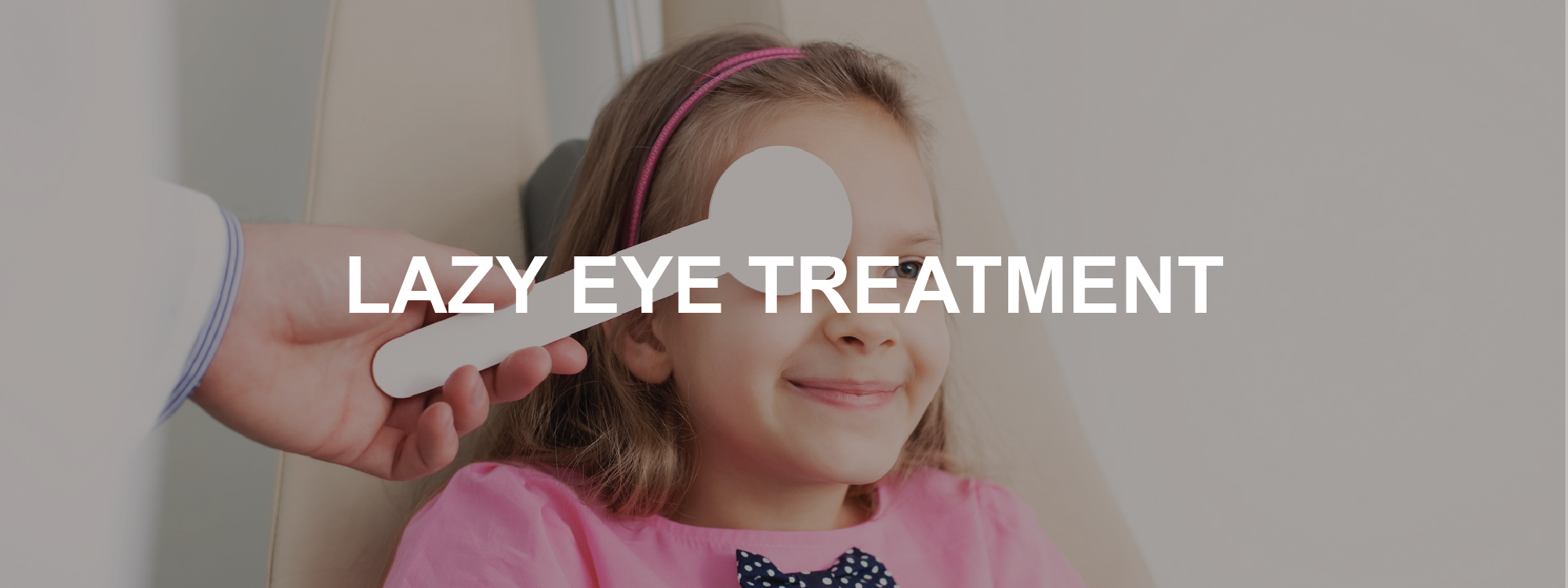Lazy Eye Treatment

Lazy Eye or Amblyopia is described as reduced vision in one eye compared to the other. There are rare forms of amblyopia that occur in both eyes. According to the National Institute of Health, amblyopia is the most common cause of visual impairment among children.
Recent research has shown that amblyopia is a disorder of the brain’s ability to use both eyes together as a team. Amblyopia is an active process due to suppression, or the brain actively ignoring the information coming from one eye. People with amblyopia are more prone to have difficulties with depth perception, eye movements related to reading, and visual decision making while driving.
Amblyopia develops in childhood due to:
- Significant differences in the refractive status between the two eyes due to farsightedness, nearsightedness or astigmatism;
- Misaligned eyes or crossed eyes;
- An obstruction of vision in early childhood i.e. cataract, ptosis (droopy eyelid)
It is important to note that a child with amblyopia rarely has any symptoms. Book a appointment for your child today.
Treatment of Amblyopia
Amblyopia is treatable at any age, although the earlier the problem is found and treated, the more successful the outcomes tend to be. Until recently, patching the better seeing eye was the only proven method of treating amblyopia.
Treatment may include:
- Eyeglasses or contact lenses (proper lenses can help reduce stress so that the under-used eye can start to work more efficiently);
- Patching or penalization of the better-seeing eye;
- Binocular vision activities;
- A program of vision therapy to help improve the visual abilities of the eye with amblyopia including accommodation (focusing), fixation, saccades, pursuits (eye tracking) and spatial skills (eye-hand coordination). A program of vision therapy may reduce the frequency of patching since the goal of amblyopia therapy is to improve eye coordination, improve stereopsis (depth perception) and reduce suppression.
